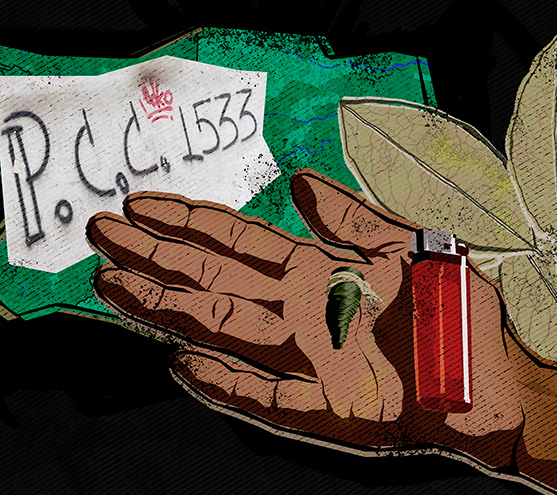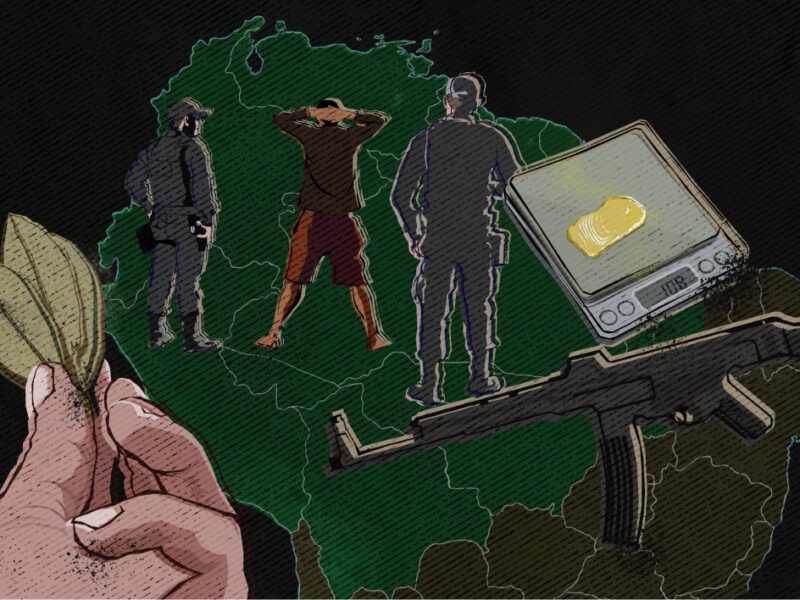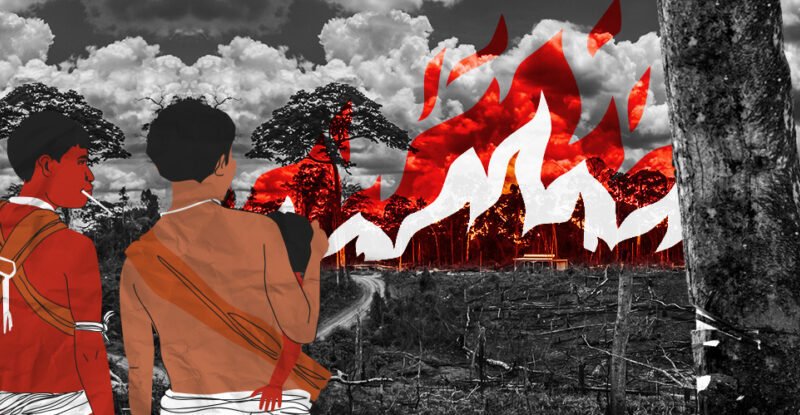Along border with Venezuela, Colombian guerrillas lure unemployed Indigenous youths into drug trade, extortion rackets and armed conflict.
Category: Regions
Brazilian drug gang takes root in Peruvian Amazon
The notorious Brazilian gang Comando Vermelho has seized control of the cocaine trade in Peru’s Ucayali region.
Colombian drug runners turn to shamans for protection
Before embarking on a perilous trek through the jungle, drug couriers in Colombia turn to shamans for protection.
The poorest narcos in the drug-trafficking chain
The poorest narcos in the trafficking chain risk even their own children to deliver drugs to criminal organizations.
Armed groups threaten Indigenous lands in southern Venezuela
In Venezuela’s southern Amazon region, Pemón Indigenous communities are caught between encroaching armed groups and illegal gold miners.
The Day of Fire, three years later: over half of the forest burned in the Amazon has become pasture
In addition to the area targeted for livestock, nearly 40% of the forest affected by the 2019 arson is still unused and was burned ‘for the sake of burning.’
Dredges: Gold mining spurs crime & corruption on Brazil-Colombia border
Miners dredging millions of dollars in gold from Brazil’s Puruê River devastate the environment and attract armed groups.
Welcome to the Amazon Underworld
The Amazon, the largest rainforest in the world, is also a source and transit point for illegally extracted jungle resources and narcotics. As criminal economies expand, violence and deforestation worsen
Survey points to advance of agricultural frontier into Yanomami Indigenous Territory; over 700 km² have suffered degradation and deforestation
Analysis of data from the Geo-Yanomami group shows that, in addition to mining, the territory also has records of deforestation. The problem is driven by advances of agribusiness.
Trees in the western and southern Amazon are less likely to survive long periods of drought
Study published in the journal ‘Nature’ sought to understand how different parts of the forest respond to drought. The research was led by a Brazilian scientist in partnership with 80 other authors and surveyed the conditions of 540 trees of 129 different species scattered across Brazil, Bolivia and Peru.











